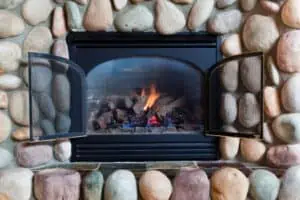How to Deactivate the Gas Fireplace Valve?
If your gas fireplace is not working or you’re worried about it, it’s important to deactivate the valve before turning it off. This will help avoid potential hazards, such as carbon monoxide or leaking gas from the system.
(Looking for”Fireplace Cleaning Services“? Contact us Today!)

First, find out what type of valve your gas fireplace has. This will help you determine whether or not it needs to be replaced. You’ll also be able to determine if your current valve is the right size for your appliance and gas line, which will save you money down the road.
Manual Valves:
Some of the more common gas fireplace valves use a manual system. This is the simplest option and can be found on most popular models. It requires you to manually turn the valve to open or close it. This is also a slightly more expensive option, but it’s easier to use and less prone to issues than a millivolt valve.
Servo Valve Kits:
Some of your favorite fireplace brands use servo-operated valves instead. These are less common than both manual and millivolt valves, but they’re the most efficient for flame modulation and control. They’re also a bit more expensive, but they give you precise control over the flame height of your fireplace and can reduce your overall operating costs significantly.
Regardless of the type of valve your fireplace uses, you should always check it regularly to ensure it isn’t leaking or malfunctioning. If your valve is leaking, it’s essential to get it repaired as soon as possible so that it doesn’t cause a fire in your home.
Thermocouple and Thermopile:
Most pilot-operated gas log fireplaces have a thermocouple that senses the pilot flame, and a thermostat that allows you to control the temperature of your pilot light with a remote device or wall switch. If the thermocouple detects that the pilot flame is too low, it prevents gas flow to the main burners. This helps keep the pilot flame alive and ensures that you don’t have to worry about a fire.
If your thermocouple fails, it may be because the connection between the thermocouple and the thermostat is loose or corroded. This is often caused by a buildup of carbon soot in the junction. The connector should be cleaned or replaced.
To deactivate the gas valve, follow these steps:
Remove the front cover or screen from your gas fireplace. Gently tug the cover or screen to reveal your gas valve’s control panel. If your gas fireplace has a key control, insert the key into the slot and turn it clockwise to shut off the valve.
Then, leave your gas fireplace unturned for at least 5 minutes to allow any lingering or excess gas to clear out. If you smell gas or see any signs of a leak, leave the room and call a certified professional to come out and investigate.
If you’re unsure how to shut off your fireplace’s gas supply, consult the user manual or your local gas provider for more instructions. You can even use your smartphone or a digital multimeter to do the job quickly.

